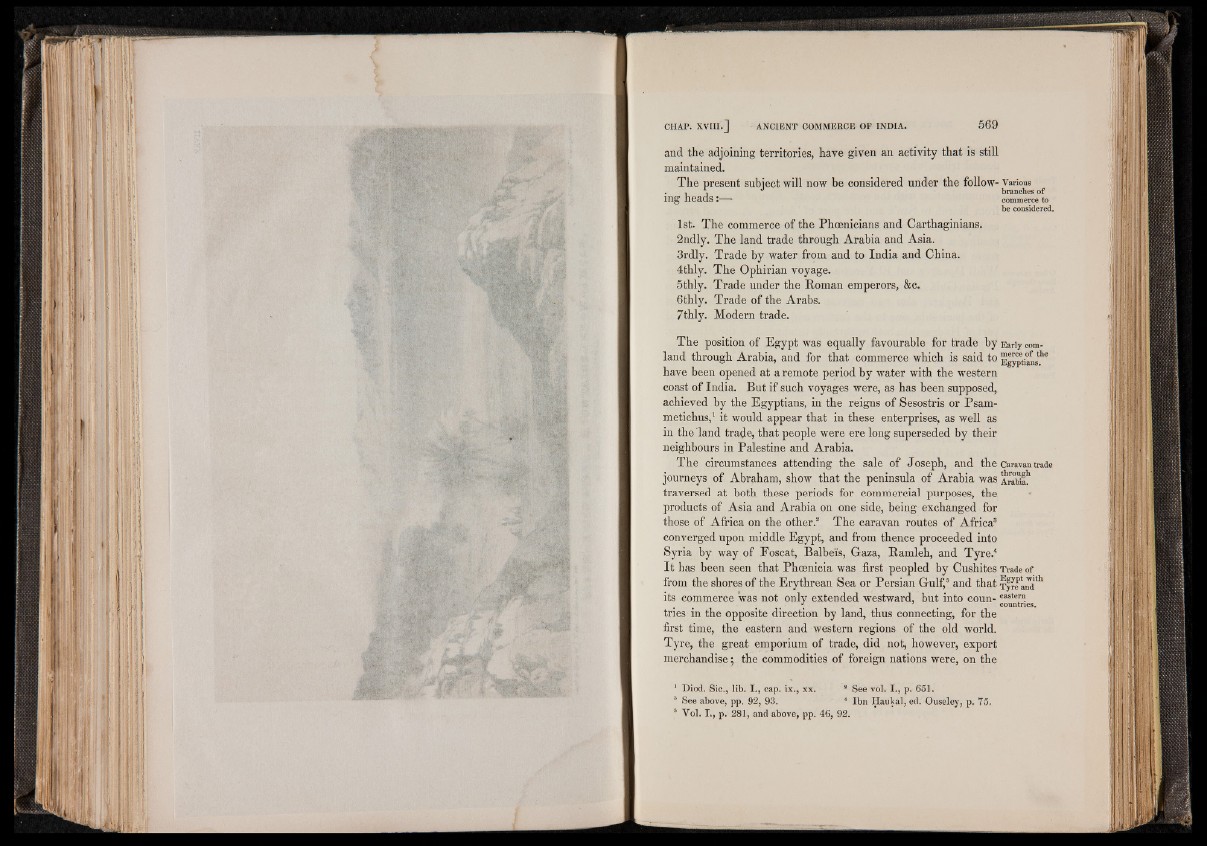
and the adjoining territories, have given an activity that is still
maintained.
The present subject will now be considered under the follow- Various
, , branches of
m g heads I commerce to
be considered.
1st- The commerce of the Phoenicians and Carthaginians.
2ndly. The land trade through Arabia and Asia.
3rdly. Trade by water from and to India and China.
4thly. The Ophirian voyage.
5thly. Trade under the Roman emperors, &c.
6thly. Trade of the Arabs.
7thly. Modern trade.
The position of Egypt was equally favourable for trade by Early com-
land through Arabia, and for that commerce which is said to
have been opened at a remote period by water with the western
coast of India. But if such voyages were, as has been supposed,
achieved by the Egyptians, in the reigns of Sesostris or Psam-
metichus,1 it would appear that in these enterprises, as well as
in the land trade, that people were ere long superseded by their
neighbours in Palestine and Arabia.
The circumstances attending the sale of Joseph, and the Caravan trade
journeys of Abraham, show that the peninsula of Arabia was Arabia!1
traversed at both these periods for commercial purposes, the
products of Asia and Arabia on one side, being exchanged for
those of Africa on the other.2 The caravan routes of Africa3
converged upon middle Egypt, and from thence proceeded into
Syria by way of Foscat, Balbeis, Gaza, Ramleh, and Tyre.4
It has been seen that Phoenicia was first peopled by Cushites Trade of
from the shores of the Erythrean Sea or Persian Gulf,5 and that Tyre and*
its commerce was not only extended westward, but into coun- easten; ' \ 7 countries.
tries in the opposite direction by land, thus connecting, for the
first time, the eastern and western regions of the old world.
Tyre, the great emporium of trade, did not, however, export
merchandise; the commodities of foreign nations were, on the
1 Diod. Sic., lib. I ., cap. ix., xx. s See vol. I., p. 651.
8 See above, pp. 92, 93. * Ibn Haukal, ed. Ouseley, p. 75.
5 Vol. I., p. 281, and above, pp. 46, 92.